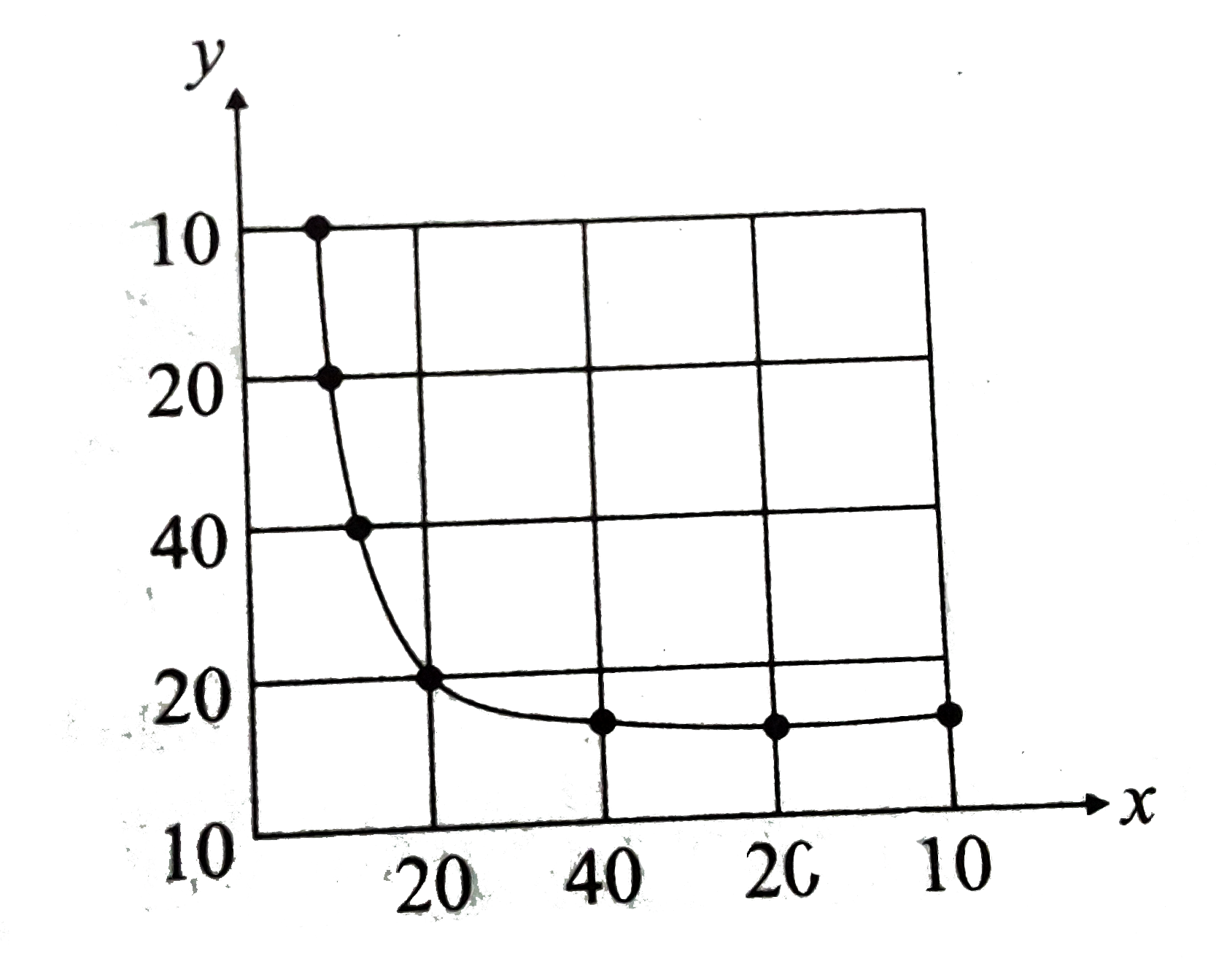A lens forms a real image of an object. The distance from the object to the lens is x cm and that from the lens to the image is y cm. The graph shows the variation of y with x.
It can be deduced that the lens is

converging and of focal length 10cm.
converging and of focal length 20cm.
converging and of focal length 40cm
diverging and of focal length 20cm
The correct Answer is:A
A diverging lens if ruled out because both x and y are positive values. Both x and y equal 20cm at their smallest sum, which occurs when
x+y=40cm=40f
∴f=10cm
This indicates a converging lens of focal length.
=10cm
Topper's Solved these Questions
- BOOK - A2ZCHAPTER - GEOMETRICAL OPTICSEXERCISE - Prism Theory And Dispersion Of Light45videos
GEOMETRICAL OPTICS
- BOOK - A2ZCHAPTER - GEOMETRICAL OPTICSEXERCISE - Optical Instruments55videos
GEOMETRICAL OPTICS
- BOOK - A2ZCHAPTER - GEOMETRICAL OPTICSEXERCISE - Section D - Chapter End Test30videos
GEOMETRICAL OPTICS
- BOOK - A2ZCHAPTER - ELECTROMAGNETIC WAVES AND COMMUNICATION SYSTEM EXERCISE - Section D - Chapter End Test30videos
ELECTROMAGNETIC WAVES AND COMMUNICATION SYSTEM
- BOOK - A2ZCHAPTER - MAGNETISM AND MATTEREXERCISE - Section D - Chapter End Test30videos
MAGNETISM AND MATTER
Similar Questions
A lens forms a real image 3 cm high of an object 1 cm high. If the separation of object and image is 15 cm, find the focal length of the lens.
View SolutionA lens forms real image of an object 20 cm away from lens. A second lens is kept in contact with this lens, then image shifts 10 cm towards the lens combination. Find the power of another lens.
View Solution
Knowledge Check
- Question 1 - Select One
A concave lens forms the image of an object such that the distance between the object and image is focal length of the lens will be
A−6.2cmB−4.4cmC−8.6cmD−10cm - Question 2 - Select One
The distance between the object and its real image from the convex lens is 60 cm and the height of image is two times the height of object . The focal length of the lens is
A203 cmB20 cmC403cmD40 cm - Question 3 - Select One
A convex lens produces a real image m times the size of the object. What will be the distance of the object from the lens ?
A(m+1m)fB(m−1)fC(m−1m)fDm+1f
A convex lens of focal length 16 cm forms a real image double the size of the object. The image distance of the object from the lens is
View SolutionA convex lens forms a real image on a screen placed at a distance 60 cm from the object. When the lens is shifted towards the screen by 20 cm , another image of the object is formed on the screen. The focal length of the lens is :
View SolutionA convex lens forms an image of an object on a screen 30 cm from the lens. When the lens is moved 90 cm towards the object, then the image is again formed on the screen. Then, the focal length of the lens is
View SolutionA lens forms a virtual image 4cm away from it when an object is placed 10cm away from it. The lens is a ….. Lens of focal length ……………
View SolutionA convex lens of focal length f produces a real image m times the size of an object, then the distance of the object from the lens is
View Solution
